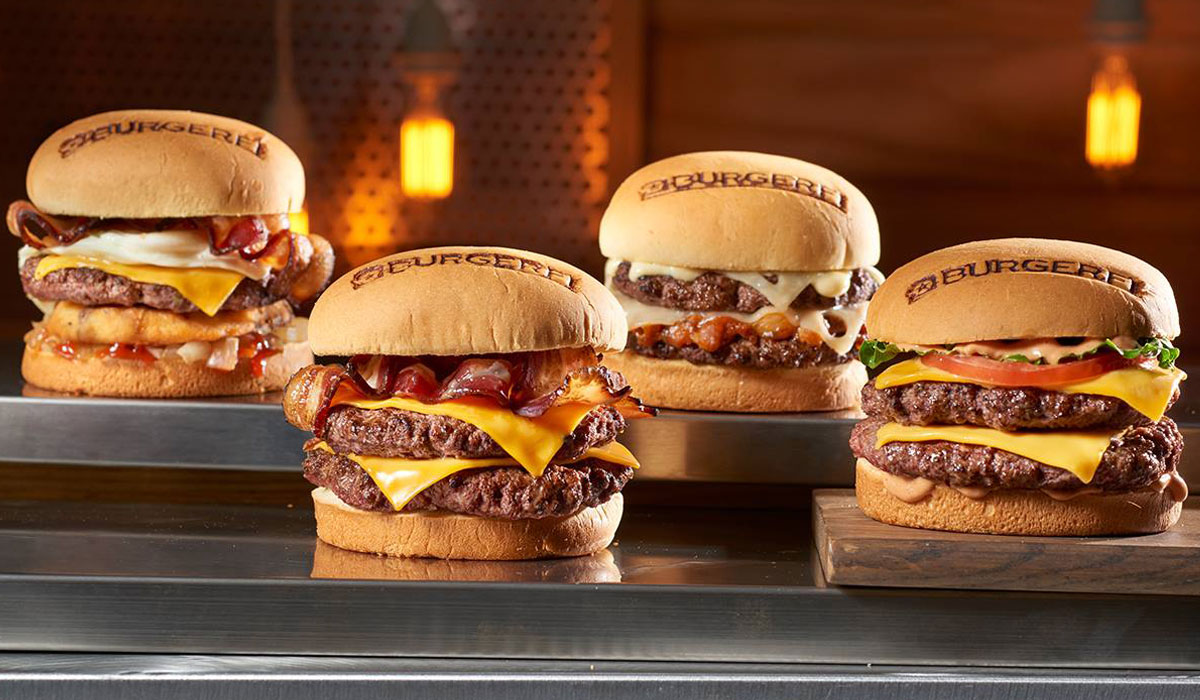The restaurant landscape is shifting, and BurgerFi knows it must adapt.
Staffing challenges have been one of the primary issues; labor and related expenses as a percentage of sales were 28.2 percent in 2021, a notable bump from 25.9 percent in 2020. Restaurant-level operating margin declined 340 basis points in the fourth quarter year-over-year, mostly due to the impact of labor.
It’s a problem taking shape across the industry. Food and drink places in March employed roughly 11.54 million workers, according to the Bureau of Labor Statistics, which is still about 750,000 shy of February 2020—placing serious doubt in the idea that restaurants’ labor pool will ever return to normal.
BurgerFi, with 118 restaurants systemwide (93 franchised and 25 corporate-owned), is responding to the shortages with digital kiosks inside its stores. The fast casual ran a test for 120 days in four restaurants in which two out of three cash registers were replaced with kiosks. The technology absorbed between 50 and 70 percent of orders, with a 30 to 50 percent upsell rate. Average check was 16 percent higher than orders taken by person. After experiencing positive impacts on sales, order accuracy, and customer experiences, BurgerFi plans to roll out kiosks to its 25 corporate locations within the next 60-70 days.
The move aligns with BurgerFi’s growing digital channel. The chain received roughly 2.5 million digital orders in 2021, an 18 percent increase year-over-year. That’s good for a roughly 40 percent mix.
“We are still going to have cashiers with points of sale, it’s just adding the kiosk options within the restaurants,” CFO Michael Rabinovitch said during the chain’s Q4 and full-year earnings call.
Anthony’s Coal Fired Pizza & Wings, which BurgerFi purchased for $156.6 million, has held onto much of its digital growth, as well. To account for those still choosing to call, the brand is piloting an AI telephone service to lighten the load of employees, especially during peak hours. Ian Baines, CEO of BurgerFi and Anthony’s, said the innovation is being tested in four locations, and the casual-dining chain is looking to add more.
The longer it runs, the more accurate algorithms become in responding to what guests are ordering, the CEO noted. Early results show a seamless experience and uptick in average check because of the AI’s upselling abilities.
“We had experimented with this type of technology about 18 months ago, and quite frankly the partner that we went with at that time was a bit clunky so we continued to improve,” Baines said. ” … It helps the guest experience. It also helps our team members and could possibly give us an opportunity to have some labor savings.”
Compared to 2019, BurgerFi’s corporate same-store sales were flat while franchises saw a 4 percent decline. Year-over-year, company-owned comps rose 5 percent and franchise same-store sales lifted 7 percent.
The brand opened 16 restaurants in 2021 after previously projecting development of 25-30 units. Rabinovitch attributed the underperformance to problems with securing equipment, permitting and construction delays, and scarcity of labor. Some store openings were pushed to 2022, giving BurgerFi a more robust development schedule to start the year. Six units have opened through March, and another 14 are under various stages of development, mostly in existing markets.
The fast casual is forecasting 15-20 systemwide debuts this year, which Rabinovitch feels is a conservative estimate. A majority of those openings will be franchise-driven, and those are just the ones BurgerFi feels sure will happen. Rabinovitch said there are a number of additional franchises that could open, but the chain decided not to include them in the estimate since it doesn’t have complete control over franchisees’ opening process.
“There could be movement within that range of 15-20 or above that range, but that would be driven by our franchisees moving a little quicker than we’ve seen them be able to in the last six months,” Rabinovitch said. ” … I think that we’ve had a lot of learnings over the last year about what to expect in the marketplace when it comes to the contractor, the labor, the equipment process, so we both feel a little bit more confident in those ranges and the delivery cycle. They’re not backloaded toward the last two months of the year.”
BurgerFi took a 3.5 percent price increase at corporate stores in January, following a 4 percent bump in June. Anthony’s raised its menu prices by 2 percent in late January.
The company expects annual revenue of $180-$190 million, mid-single-digit same-store sales growth, and adjusted EBITDA of $12-14 million, which are inclusive of the Anthony’s business.



